The Technical Stuff
Learn how to set up your Nagivation Menu structure (the Menus found in your Header- top of website, Footer- bottom of website, and any other Menus you want to set up).
Also learn about Anchor Links, which create links for your visitor to land exactly where you want them to on your website page.
Custom Menu Anchor Links
1- Setting Custom Menu Links
Anchor Links
You can create custom menu links (known as “anchor links”) for:
- Buttons
- Call To Action modules
- Text Links
- Menus (in your header and footer)
- Just about anywhere you can insert a link
Instead of having links take you to a whole page, you can create custom links to take your website visitor directly to the relevant sections on a page.
When clicked, these custom links can take you to the relevant section on the same page using a smooth scrolling effect or drop down exactly where you want your visitor to land on a new page.
This can be accomplished using custom ID’s in your modules or elements. Any element on the page that is built with the builder can be assigned an ID.
How to set a custom ID to create a custom menu link:
To assign an ID to a section, row, or module, simply:
- click on the section, row, or module settings icon
- Click the “advanced” tab
- Click the “CSS ID & Classes” setting
- In the “CSS ID” field, write a simple, one word identifier to set the ID

Once an ID has been assigned, you can then link to it from the navigation menu or use the anchor within any module (buttons, text links, CTA, etc.) by using the anchor with a # sign in front.
For example, let’s say you have a section called “About Us” and you want it to link to the part of your page that describes your company.
- Edit the section that contains your About Us content
- Enter “aboutus” into the “CSS ID” field
- click “Save”
Now that an ID has been assigned, we can point a link to it like this in any text module within your page: /home/#aboutus
Link Structure: /page/#anchorlink
Be sure to include the page the anchor link is found on!
Link Anchors look in Menu:
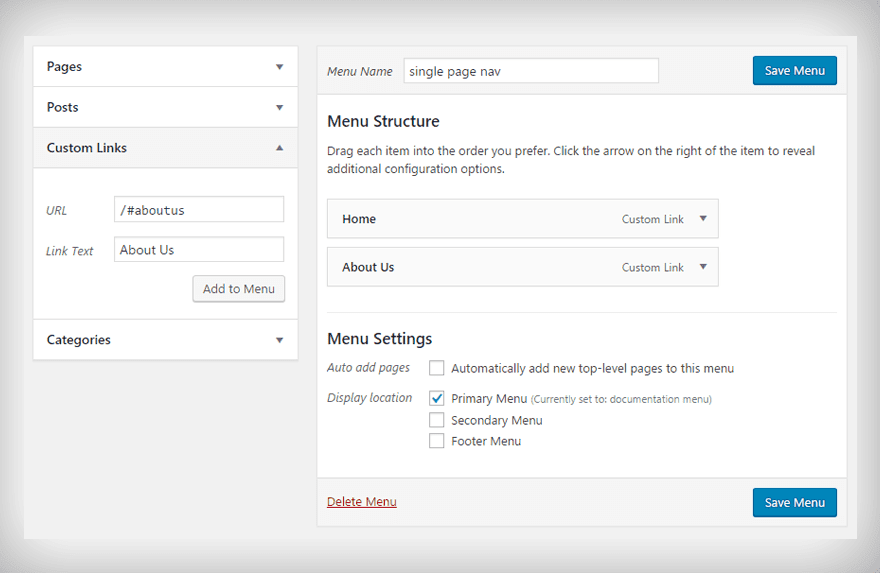
Link Anchors in any module (button, link, etc)

Link Anchors as a hyperlink within text:

2-1 Setting Navigation Menu
Before you can use the full-width Menu Module in Divi Builder (for your Complete Website Kit Header and Footer), you will need to create Menus in the WordPress Menu settings.
2-1 Creating Your Menu
- Once in your Menu area of your website, you will be promoted to give your menu a name > name your Menu (e.g. “main menu”) > click “create menu”
2-2 Adding To Your Menu
- In the left hand column of the menu page > add menu items > click “view all” > check each page you would like to add to your menu that you have customized and published
- To add custom links (like for FAQ section), in the left hand column, click “custom links” > type in URL (e.g. https://yourwebsite.com/services/#faq) to add the FAQ section to your menu > Link Text: FAQ
- Be sure to input YOUR website hyperlink in place of “yourwebsite.com
2-3 Setting Main Menu
- Scroll down to “Menu Settings” > click “primary menu” checkbox > click “save menu”
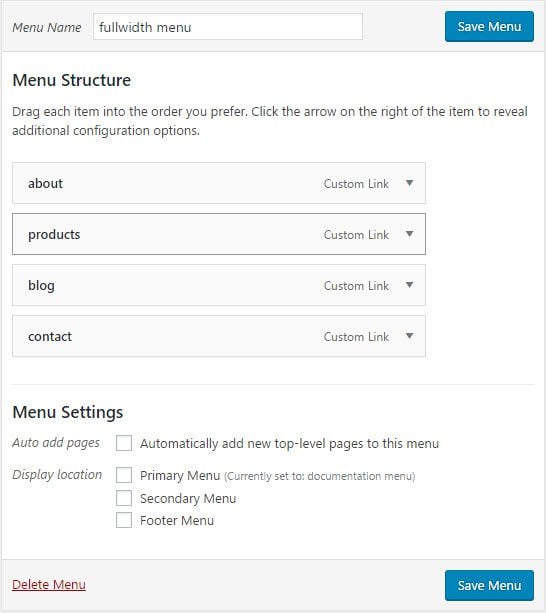
2-4 Creating additional Menus (footer menu, blog menu, etc) for
- While in your Menu area , you will be prompted to give your menu a name > name your Menu (e.g. “blog menu”, “footer menu”) > click “create menu”
- You will be able to set
2-2 Adding To Your Blog Menu
- In the left hand column of the menu page > add menu items > click “Categories” then select “view all” > check each Category you would like to add to your menu bar on your blog page.
2-2 Full Width Menu Module
2-2a Creating additional Menus (footer menu, blog menu, etc) for
- While in your Menu area , you will be prompted to give your menu a name > name your Menu (e.g. “blog menu”, “footer menu”) > click “create menu”
- Once you’ve created your additional menus (main menu, footer menu- if applicable, blog menu – if applicable, etc), you will be able to select these menus in the dropdown area of the Full Width Menu Divi Module
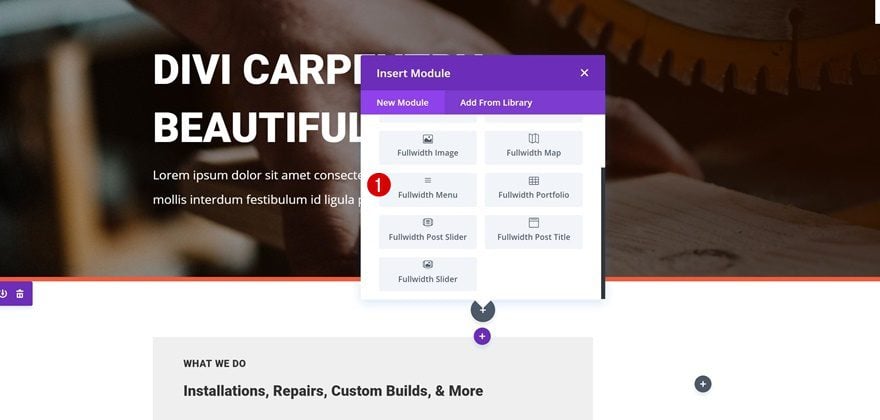
For Complete Website Kits, most Menus are built within the Divi Full Width Menu module. For the Header area, you will need to implement the main menu you set in the Menu area, and for the footer menu, select the “footer” menu you created.
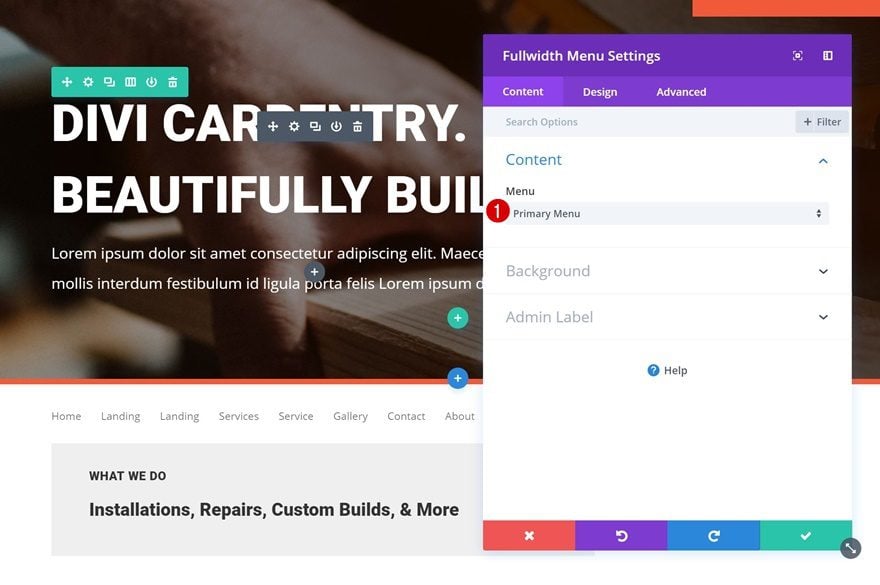
Be sure to customize the Full Width Menu to meet your branding needs:
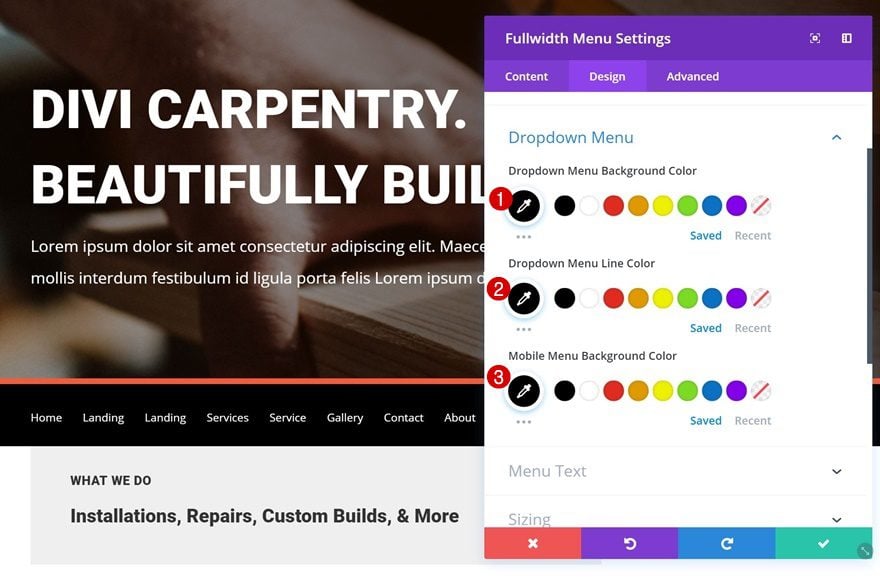
2-2b Adding To Your Blog Menu (optional)
- In the left hand column of the menu page > add menu items > click “Categories” then select “view all” > check each Categories you would like to add to your menu bar on your blog page.
To view instructions on how to set Blog Post categories, click here
